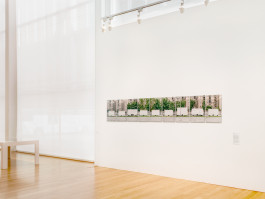
The Radiant City
Photo series
2010
The Radiant City is a series of faux-panorama photographs that document transgressions and anomalies within the planned space of the large socialist housing estates in Budapest, Hungary, where I was living at the time.
Tents that serve as makeshift garages, shipping containers that double as shops, or concrete blocks now used as seats: they all break the planned uniformity of the housing estates, however repeat themselves in a manner as linear as the surrounding space even though they were put there informally.
This series is an exercise of observation and gathering, a hybrid of photography and anthropology. In this series I wanted to reflect on the architectural framework of the socialist legacy, and how the modernist utopia of the “Radiant City”, inhabited by uniform citizens, succumbed to the circumstances and saw itself changed by the needs of those who actually live it.
In 2016 I published a book that shows part of the images of this series, accompanied by the original text “Ready-made serialism” by Hungarian urbanist and researcher Levente Polyák, that gives this series social and political context.
Exhibitions
The Radiant City
Solo show
Faur Zsófi Gallery, Budapest
September – October 2017
Quote/Unquote: between appropriation and dialogue
Group exhibition curated by Gabriela Vaz Pinheiro e Ana Anacleto
MAAT – Museum of Art, Architecture and Technology, Lisbon
October 2017 – May 2018
Galeria Municipal do Porto
March – May 2017
Startpoint Prize 2011
Award
Prague/Brno
2011
StartPoint Prize 2011
Group exhibition
Wannieck Gallery, Brno, CZ
October – December 2011
Galerie výtvarného umění, Cheb, CZ
January – March 2012
BES Revelação 2010
Group exhibition curated by Margarida Mendes
Serralves Museum of Contemporary Art, Porto
November 2010 – January 2011
Galeria BES Art&Finance, Lisbon
February – May 2011
BES Revelação/BES Revelation
Award
Porto/Lisbon
2010
** Images may take a momento to load **
** Images can be scrolled horizontally **
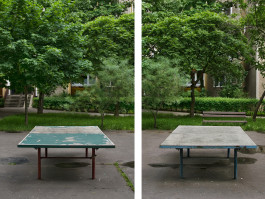
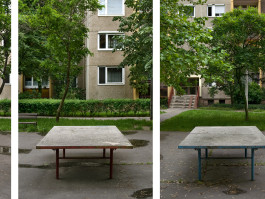
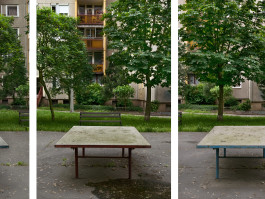
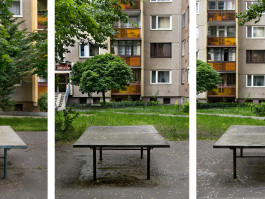
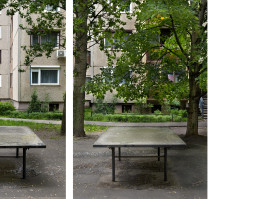
Újpesti lakótelep (Újpest Estate)
Row of ping-pong tables in the area between two blocks of flats. Ping-pong tables are a common feature in many estates. However, most of them don't have maintenance, and are therefore unusable because the surface is no longer even.
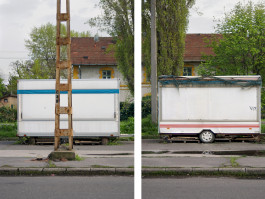
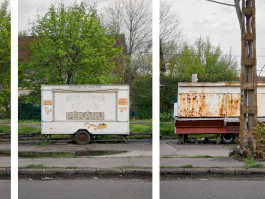
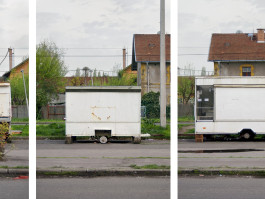
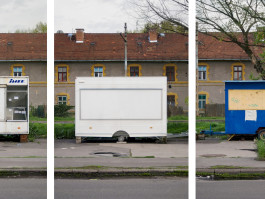
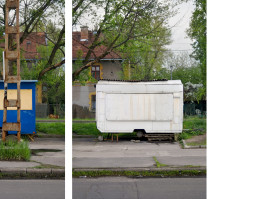
MÁV lakótelep/Salgótarjáni utca (MÁV Estate/Salgótarjáni Street)
Caravans used as shops, selling mostly food. These ones only open on weekends.
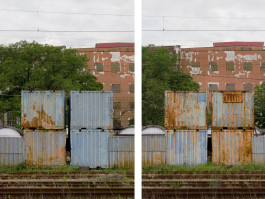
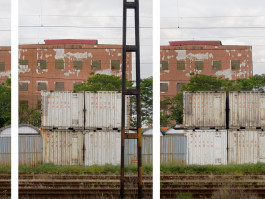
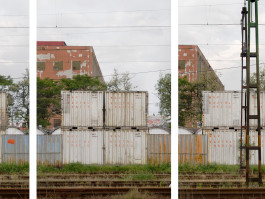
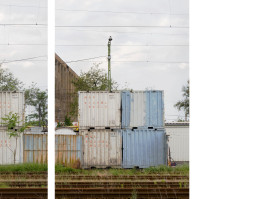
Józsefvárosi Piac/Kínai Piac (Józsefváros Market/Chinese Market)
View of the back of the Chinese Market (torn down in 2013, and transferred to the opposite side of the street), seen from the abandoned Józsefváros Railway Station. The shipping containers served as makeshift establishments, in which the lower one is used as a shop, while the upper one is used as storage.
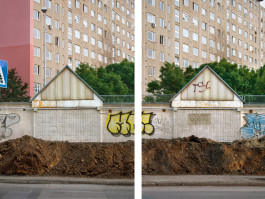
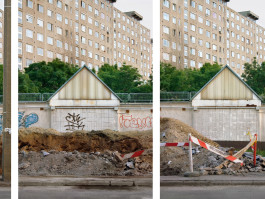
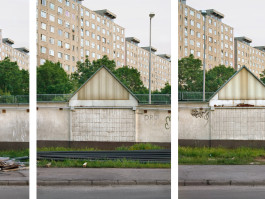
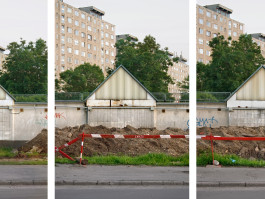
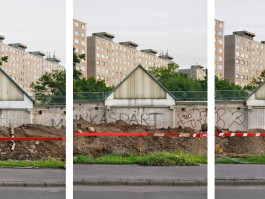
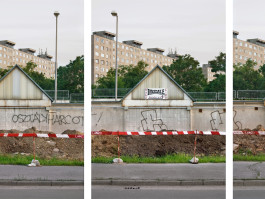
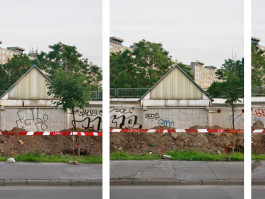
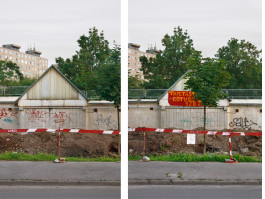

Kőbánya-Kispest lakótelep (Kőbánya-Kispest Estate)
“Garage city” at the edge of a large housing estate. Many estates didn’t originally have garages, as car ownership only became widespread after the end of communism. The solution was to build garages later, normally at the edge of the estates. On these ones, the graffitis read, among other identical slogans, “workers party” and “class struggle”.
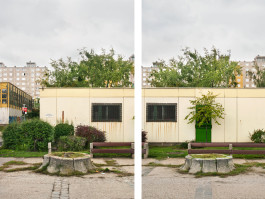
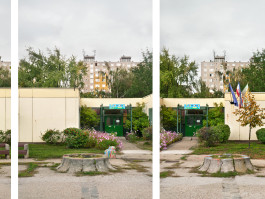
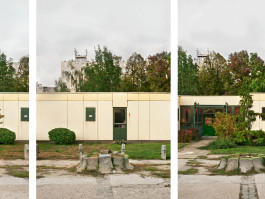
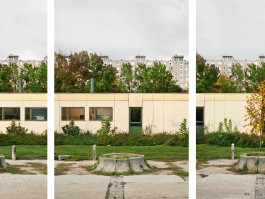
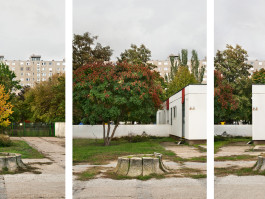
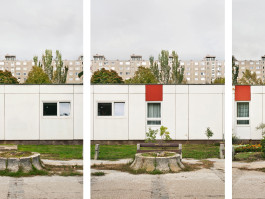
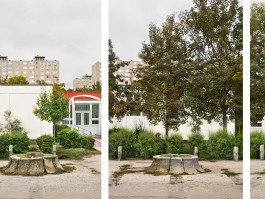
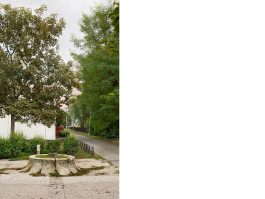
Havanna utcai lakótelep (Havana Street Estate)
Round precast-concrete flowerbeds that used to have tree, from which only a stump survives. The building behind is a school and kindergarten.
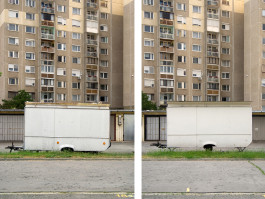
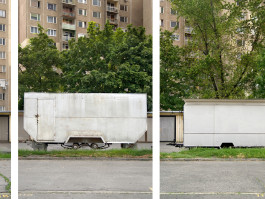
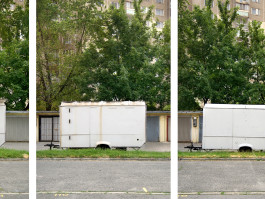
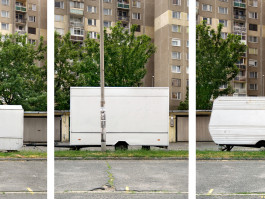
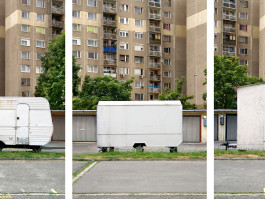
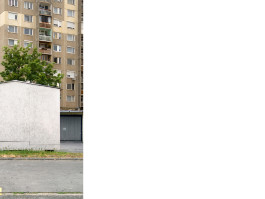
Havanna utcai lakótelep (Havana Street Estate)
Caravans used as shops, selling mostly food. These ones only open on weekends.
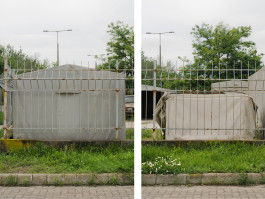
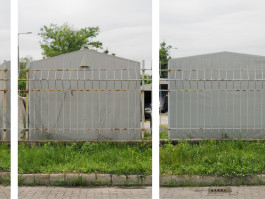
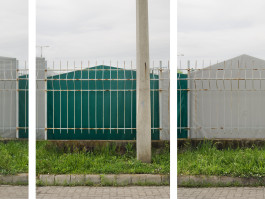
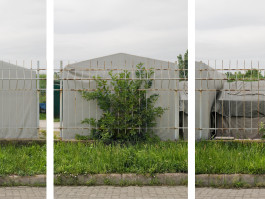
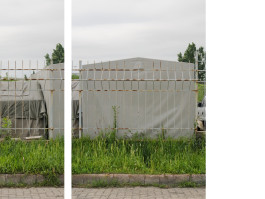
Erdősor úti lakótelep (Erdősor Road Estate)
Another example of a “garage city” at the edge of a large housing estate. Another common solution was to use tents large enough for cars, installed at open-air common areas that got fenced, taken out of use, and converted into makeshift garages.
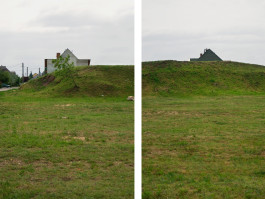
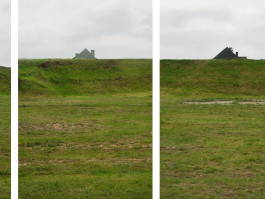
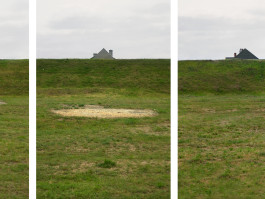
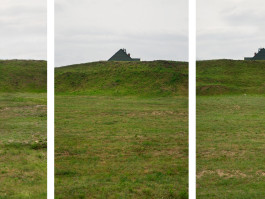
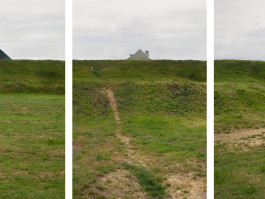
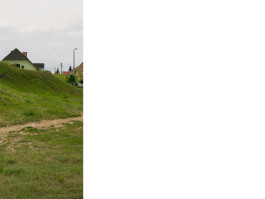
Alacskai úti lakótelep (Alaska Road Estate)
The construction of another part of this housing estate was started but halted because of the end of communism. The very regular "hill" is the beginning of the earthworks in preparation for construction. The rooftops on the back belong to recent houses, some still under construction.
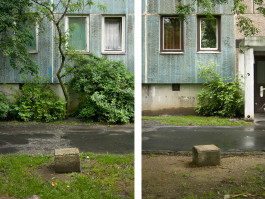
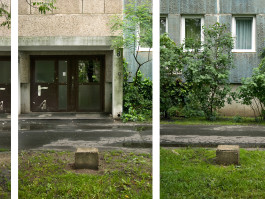
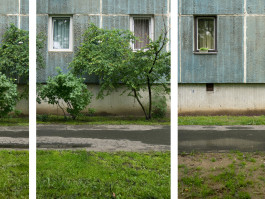
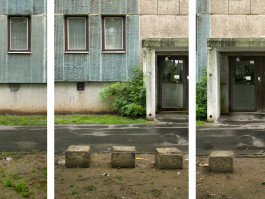
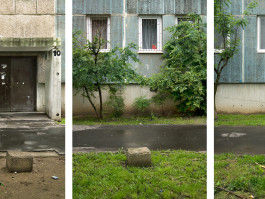
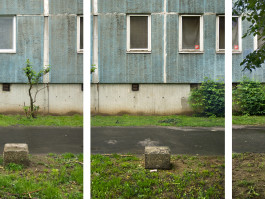
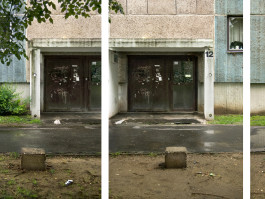
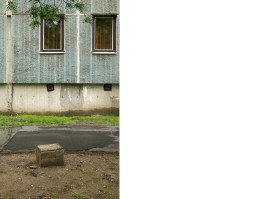
Békásmegyer lakótelep (Békásmegyer Estate)
These concrete blocks are used to prevent cars from parking on the grassed areas. Residents, however, also use them as seats for when chatting by the entrances, an evidence of which is the worn out grass. Some blocks were also moved, so that people can seat closer together.
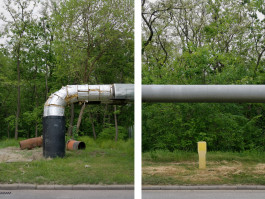
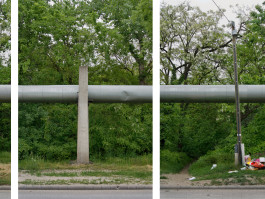
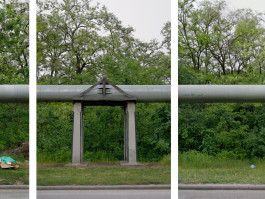
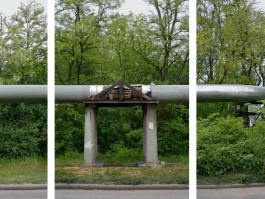
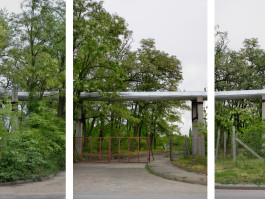
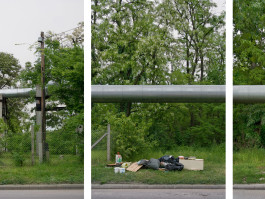
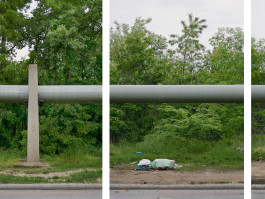
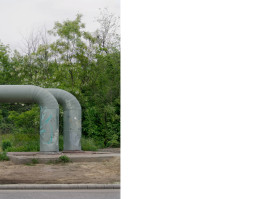
Kőbánya-Kispest
Running alongside a road, this pipe is part of the district heating system that supplies hot water to the Kőbánya-Kispest Estate.
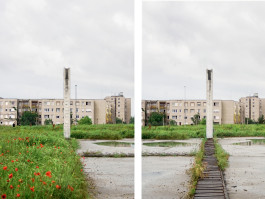
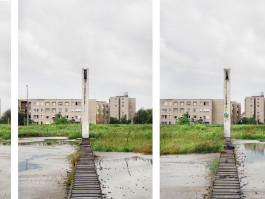
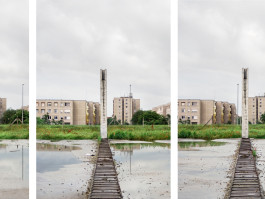
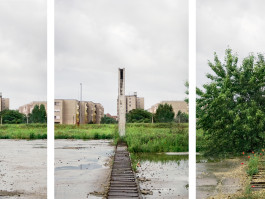
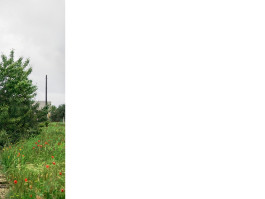
Rákoskeresztúri lakótelep/Újlak utca (Rákoskeresztúr Estate/Újlak Street)
Construction of this estate was halted because of the end of communism. The foundations for the new buildings remain untouched.
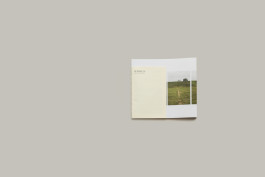
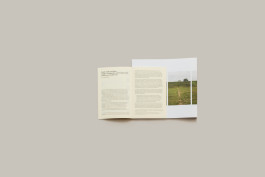
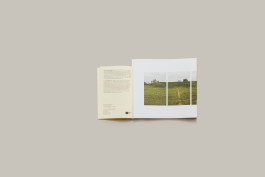

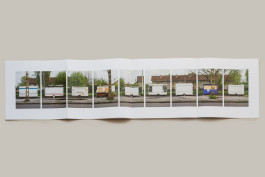
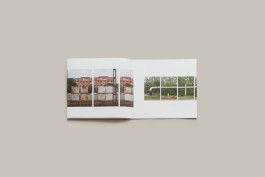
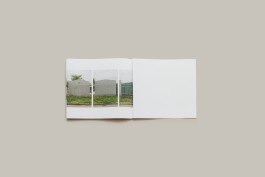
The Radiant City
Book
September 2016
Published by
Pierrot le Fou and Carlos Azeredo Mesquita, Porto
Design
Carlos Azeredo Mesquita
Format
24,5 × 22cm, unfolding to 96 × 22cm
Offset printed
24 color pages, 16 black-and-white text pages on colored paper
200 copies
ISBN 978-989-20-6885-5
Language
English, Portuguese, and Hungarian
→ BUY HERE 25€
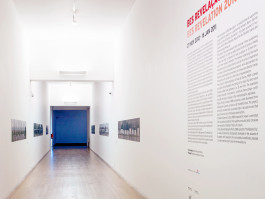
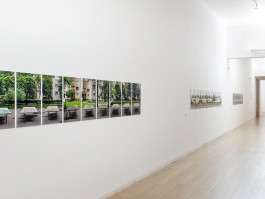
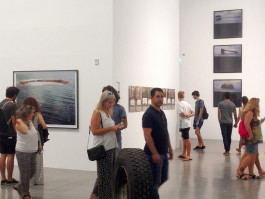
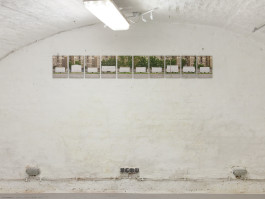
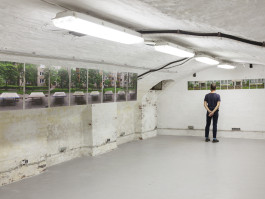
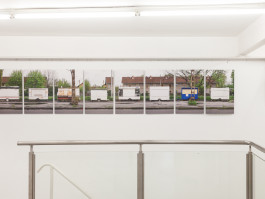
Exhibition views / Photo credits
1
Galeria Municipal do Porto / Carlos Azeredo Mesquita
2–3
Serralves Museum of Contemporary Art / Filipe Braga
4
MAAT – Museum of Art, Architecture and Technology, Lisbon / Carlos Azeredo Mesquita
5–7
Faur Zsófi Gallery / Carlos Azeredo Mesquita

The Radiant City
Photo series
2010
The Radiant City is a series of faux-panorama photographs that document transgressions and anomalies within the planned space of the large socialist housing estates in Budapest, Hungary, where I was living at the time.
Tents that serve as makeshift garages, shipping containers that double as shops, or concrete blocks now used as seats: they all break the planned uniformity of the housing estates, however repeat themselves in a manner as linear as the surrounding space even though they were put there informally.
This series is an exercise of observation and gathering, a hybrid of photography and anthropology. In this series I wanted to reflect on the architectural framework of the socialist legacy, and how the modernist utopia of the “Radiant City”, inhabited by uniform citizens, succumbed to the circumstances and saw itself changed by the needs of those who actually live it.
In 2016 I published a book that shows part of the images of this series, accompanied by the original text “Ready-made serialism” by Hungarian urbanist and researcher Levente Polyák, that gives this series social and political context.
Exhibitions
The Radiant City
Solo show
Faur Zsófi Gallery, Budapest
September – October 2017
Quote/Unquote: between appropriation and dialogue
Group exhibition curated by Gabriela Vaz Pinheiro e Ana Anacleto
MAAT – Museum of Art, Architecture and Technology, Lisbon
October 2017 – May 2018
Galeria Municipal do Porto
March – May 2017
Startpoint Prize 2011
Award
Prague/Brno
2011
StartPoint Prize 2011
Group exhibition
Wannieck Gallery, Brno, CZ
October – December 2011
Galerie výtvarného umění, Cheb, CZ
January – March 2012
BES Revelação 2010
Group exhibition curated by Margarida Mendes
Serralves Museum of Contemporary Art, Porto
November 2010 – January 2011
Galeria BES Art&Finance, Lisbon
February – May 2011
BES Revelação/BES Revelation
Award
Porto/Lisbon
2010
** Images may take a momento to load **
** Images can be scrolled horizontally **





Újpesti lakótelep (Újpest Estate)
Row of ping-pong tables in the area between two blocks of flats. Ping-pong tables are a common feature in many estates. However, most of them don't have maintenance, and are therefore unusable because the surface is no longer even.





MÁV lakótelep/Salgótarjáni utca (MÁV Estate/Salgótarjáni Street)
Caravans used as shops, selling mostly food. These ones only open on weekends.




Józsefvárosi Piac/Kínai Piac (Józsefváros Market/Chinese Market)
View of the back of the Chinese Market (torn down in 2013, and transferred to the opposite side of the street), seen from the abandoned Józsefváros Railway Station. The shipping containers served as makeshift establishments, in which the lower one is used as a shop, while the upper one is used as storage.









Kőbánya-Kispest lakótelep (Kőbánya-Kispest Estate)
“Garage city” at the edge of a large housing estate. Many estates didn’t originally have garages, as car ownership only became widespread after the end of communism. The solution was to build garages later, normally at the edge of the estates. On these ones, the graffitis read, among other identical slogans, “workers party” and “class struggle”.








Havanna utcai lakótelep (Havana Street Estate)
Round precast-concrete flowerbeds that used to have tree, from which only a stump survives. The building behind is a school and kindergarten.






Havanna utcai lakótelep (Havana Street Estate)
Caravans used as shops, selling mostly food. These ones only open on weekends.





Erdősor úti lakótelep (Erdősor Road Estate)
Another example of a “garage city” at the edge of a large housing estate. Another common solution was to use tents large enough for cars, installed at open-air common areas that got fenced, taken out of use, and converted into makeshift garages.






Alacskai úti lakótelep (Alaska Road Estate)
The construction of another part of this housing estate was started but halted because of the end of communism. The very regular "hill" is the beginning of the earthworks in preparation for construction. The rooftops on the back belong to recent houses, some still under construction.








Békásmegyer lakótelep (Békásmegyer Estate)
These concrete blocks are used to prevent cars from parking on the grassed areas. Residents, however, also use them as seats for when chatting by the entrances, an evidence of which is the worn out grass. Some blocks were also moved, so that people can seat closer together.








Kőbánya-Kispest
Running alongside a road, this pipe is part of the district heating system that supplies hot water to the Kőbánya-Kispest Estate.





Rákoskeresztúri lakótelep/Újlak utca (Rákoskeresztúr Estate/Újlak Street)
Construction of this estate was halted because of the end of communism. The foundations for the new buildings remain untouched.







The Radiant City
Book
September 2016
Published by
Pierrot le Fou and Carlos Azeredo Mesquita, Porto
Design
Carlos Azeredo Mesquita
Format
24,5 × 22cm, unfolding to 96 × 22cm
Offset printed
24 color pages, 16 black-and-white text pages on colored paper
200 copies
ISBN 978-989-20-6885-5
Language
English, Portuguese, and Hungarian
→ BUY HERE 25€






Exhibition views / Photo credits
1
Galeria Municipal do Porto / Carlos Azeredo Mesquita
2–3
Serralves Museum of Contemporary Art / Filipe Braga
4
MAAT – Museum of Art, Architecture and Technology, Lisbon / Carlos Azeredo Mesquita
5–7
Faur Zsófi Gallery / Carlos Azeredo Mesquita